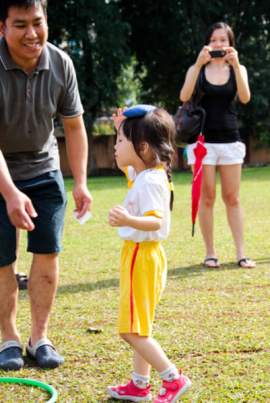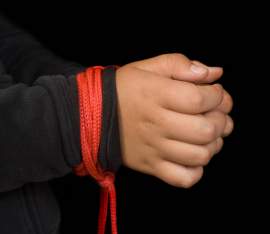
Juvenile Justice Process Background

Background
While rates of juvenile crime and policies reacting to its incidence have seen their ups and downs, generally, history has seen an upward trend in terms of considerations for the welfare of child, concordant with the notion that a child's rights do not end with their violation of the law. In the very early goings in America, however, common law aspects of legal codes were not so generous.
Even children who had not even reached their teens were subject to prosecution as an adult and being lumped in with adult offenders, presenting new risks to their tendencies toward delinquency and their very personal safety. Solutions such as work camps were also employed as a consequence for children, but here too, there arose concerns for children's welfare as they were frequently not separated from older criminals.
In the 19th Century and beyond, the overall approach in the United States toward juvenile justice changed as a reflection on new theories about child development and child psychology, and not merely as a means of adding safeguards for convicted children, but also to save youths from situations that promoted abuse and neglect.
With so many states possessing their own juvenile justice systems and yet at the same time modeling theirs after one another and sharing the name of being "juvenile justice systems," there are clear similarities and variations with regard to these bureaus across jurisdictions. In terms of procedural elements, as incarnations of the law the juvenile justice process is fairly standard from location to location.
Law enforcement or another agencies licensed to assist in arrests will bring children in for questioning as a result of an outside complaint or direct evidence of a wrongdoing. Following their investigation, a child may either be freed from police custody or referred to juvenile court, sometimes requiring detention if they are believed to be a danger to themselves or others or a flight risk. Depending on the circumstances, different courts and hearings will be part of the process (e.g. preliminary, probable cause, adjudicative, disposition).
The decision of whether or not to process children for additional sentencing is reached as a result of an adjudication hearing presided over by a judge and mediated by prosecutors and defense attorneys questioning witnesses and testing the validity of evidence brought before the court. If the judge does find against a juvenile suspect, they may be removed and sent back home under supervision of the family at large and review by a case manager, put on probation, which is conditional and involves appointed officers in its own right, or the worst possible outcome: confinement in a secure facility.
How exactly these options are applied, though, is where differences among the states really come into play. Certainly, the legal age of majority is an important number to the child defendant, and one that varies with the jurisdiction. States also have idiosyncratic policies with regard to when children may be tried as adults and when they may be transferred between juvenile and criminal court, if at all.
Juvenile Delinquency Prevention Act
Of course, policies against juvenile crime and juvenile delinquency are only as good as the resources available to consistently implement them and a reliable entity to handle this task. The language of the Juvenile Justice and Delinquency Prevention Act of 1974 provides for both, and by virtue of this, is one of the more significant pieces of legislation to be passed by Congress on the subject of juvenile delinquency.
As it was drafted, the Juvenile Delinquency Prevention Act serves as a response to the inadequacies of local and State agencies to house the thousands of juvenile delinquents across America and to provide them the services needed to rehabilitate them and keep them from becoming repeat offenders into adulthood. At the same time, though, the Federal Government saw its own degree of accountability in these matters and outlined a plan in the Juvenile Delinquency Prevention Act by which funds could distributed to individual juvenile justice systems and communities with the willingness to stamp out conditions amenable to delinquency but lacking the means.
Participation in grant receipt programs is contingent on specific "core conditions" that are to accompany the adjudication and detention of minors in facilities. States must show evidence of their commitment of fair alternatives to long periods of detention or incarceration for status offenses and other offenses not needed to be heard in a criminal court.
They also must make efforts to prevent interaction of child offenders with adult convicts who may be negative influences or dangers to them, and to explore efforts to keep children and families of minority ethnic backgrounds out of the justice system. All of these stipulations and authorizations of grants would come to fall under the dominion of the Office of Juvenile Justice and Delinquency Prevention, also a result of the Act.
Basically, the primary function of the Office of Juvenile Justice and Delinquency Prevention is to empower others that share its namesake missions of giving children and the general public true justice (not merely locking children away), but at the same time to lessen the burden they experience in being part of this cause. One means of achieving this is funding.
Working with the rest of the Department of Justice and organizations specifically geared towards child protection (e.g. the National Center for Missing and Exploited Children), the OJJDP provides services and a number of grants in the form of direct grants to states, juvenile accountability grants to justice systems, and grants to communities for prevention programs. The Office also regularly publishes and/or links to newsletters, bulletins, reports, and other sources of information, often free of charge to the consumer.
National Criminal Justice Reference Service
Like the Office of Juvenile Justice and Delinquency Prevention, the National Criminal Justice Reference Service (NCJRS) is also interested in stimulating change on a large scale, advocating for new programs, research and legislative policies on juvenile criminal affairs, and likewise, is funded wholly by the Federal Government (i.e. the Department of Justice and the Executive Office of the President).
However, whereas the OJJDP is more narrowly focused on juvenile justice, the NCJRS only deals in part with the topic; among its other concerns are law enforcement, court systems, and corrections. Plus, within each of the topics approached by the Service, there are links to publications and resources for tens of subtopics within.
Certainly, noting the comprehensive scope of these resources, it should not be implied that the NCJRS gives only passing mention to juvenile justice. In fact, the National Criminal Justice Reference Service provides question-and-answer, publication and resource links for a number of categories under the juvenile justice umbrella, such as delinquency, juvenile courts, youth detention, child health, child abuse/exploitation/neglect, truancy and other school-related crimes, and minority presence in the juvenile justice system.
NEXT: National Center for Juvenile Justice




















